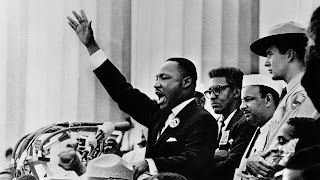Wednesday, January 1, 2014
2014: the year we were waiting for
2013 was quite a busy year and I'm ashamed I left this blog a little abandoned. That's the price of being involved in so many projects. So, if there's one thing I can say about the year that had just gone is that it was a very creative and productive time, which means that I'm also burned out by now.
Hopefully, this is the vacation time around here, so I can take a rest and a deep breath and try to rearrange things. And of course, do some planning about teaching, career and other personal goals.
Looking at what is about to come, 2014 is probably going to be a very awkward year: the Fifa World Cup is on the corner, and it will have a serious impact on school schedules. At least on my school district, the next term will start sooner than the usual, so we can finish our activities before the World Cup starts. And the second term will be split in two, so teachers and students will have a break in October to compensate some days of vacation they missed in January. And of course, there'll be all the media euphoria that will affect the kids (not to mention all the others things concerning this World Cup...), what will demand a lot of energy and creativity from us teachers.
It's ironic that we have been talking about 2014 for so long, since the World Cup was announced, and, well, now it's here and nothing has changed and even the basic infrastructure like stadia isn't done yet.
Apart from that, a new year always seems to give us that psychological strength that we're always looking for, what makes it always welcome.
So, for many reasons, I guess we all have been waiting for 2014. Let the new year renew your hopes and get ready for all the opportunities it will bring.
Wednesday, August 7, 2013
Valuable distinctions in ESP
I’ve always
heard about English for Specific Purposes (ESP) but it was only recently that I
got acquainted with two important distinctions on this field. I’m talking about
two concepts that are very valuable to every teacher/instructor on this
context: English for Academic Purposes (EAP) and English for Occupational
Purposes (EOP).
English For
Academic Purposes
As the name
suggests, it focuses on the preparation of students who are about to start a
course in an Academic Field. It involves not only the languages skills, like
specific vocabulary, but also key abilities related to common activities in any
Academic Situation, such as writing reports, taking notes, raising questions and
doing formal presentations, that are directly linked to the students’ academic
success.
English for
Occupational Purposes
It’s more
like a training on some very specific language that is going to be demanded on
a professional situation. It can take place prior to work or in service. It
tends to be a really practical approach focusing on students' realistic and immediate needs.
These two distinctions are really key for teachers designing a course and who needs to have a clear view of its goals in order to estabilish realistic and achievable goals.
You may also like:
Monday, April 1, 2013
April Fools' Day Vocabulary ('Dia da Mentira' em Inglês)
Don't be a fool! A few key words related to April Fools' Day and their Portuguese translation.
April Fools' Day
("Dia da Mentira", literalmente, "Dia dos Tolos")
Fool (tolo, bobo)
Hoax (farsa / fraude)
Joke (piada)
To make fun of somebody / to mock somebody
(tirar sarro de alguém)
Prank / Practical Joke (trote / 'piada prática')
Trick (truque, artimanha, trote, 'peça')
To play a trick ('pregar uma peça')
You may also like:
Marcadores:
April Fool's Day,
celebration dates,
language,
Vocabulary
The History of April Fools' Day
April Fools' Day, celebrated on April 1st, is a very peculiar celebration. Although it isn't an official holiday anywhere, it's widely spread around the world with different names and sometimes in different dates. In Brazil, for instance, it's also celebrated in April 1st, but it is called "Dia da Mentira", something like "The Lie's Day", and as the name suggests, people have some fun by not telling the truth to their friends.
History
It seems that April Fool's Day had its origin in ancient Roman festival called Hilaria and also in a Medieval festival called the "Feast of Fools".
But the most accepted version for it is related to a change in the calendar. Until the 18th century, many important European cities still celebrated the New Year (or at least the civil or legal New Year) with a week long festival called "Feast of Annunciation", that started on March 25th and ended on April 1st (during the Middle Ages many countries under the strong influence of the Church had changed the beggining of New Year for an important Christian Day, like Christmas, Easter or the Annunciation).
As things changed, some people who celebrated the beginning of the year in January 1st started making fun of who celebrated it on April 1st.
In France, one common thing was to put a paper fish on the back of other people while saying 'poisson d'Avril', which means 'April fish' in French.
Fools' Day History - Video
Now that you know about April Fools' Day you can practice your reading and listening skill watching this cool video. Enjoy it! And nice pranks!!
For more information:
April Fools' Day (Wikipedia Article)
April Fools' Day Mystery: How Did It Originate?
You may also like:
Marcadores:
April Fool's Day,
celebration dates,
culture,
History
Sunday, March 17, 2013
The History of Saint Patrick's Day
March 17th is when we celebrate Saint Patrick's Day. Once only an Irish religious celebration, it changed though times and became a funny and happy holiday that celebrates the Irish culture and heritage in different parts of the world. Read the article bellow and learn more about it! And, of course, have a happy St. Patrcik's Day you all!
Who was Saint Patrick?
The patron saint and national apostle of Ireland, Saint Patrick has been historically credited with formalizing the presence of Christianity in Ireland during the 5th century AD. He is said to have abolished the Druid's pagan rites and converted and baptized their warrior chiefs.
The Shamrock
Legend tells that the Irish apostle used the shamrock to explain the Christian concept of the Trinity to potential converts. The three leaves of the shamrock, which today is a popular symbol of the St. Patrick's Day holiday, were used to represent the father, the son, and the holy spirit.
St. Patrick's death
There are multiple accounts of the location and events leading to Saint Patrick's death. One fact is unanimously accepted, however: Saint Patrick died on March 17. Since that day, Irish Catholics have celebrated March 17th as a religious holiday.
Food & drink
Because St. Patrick's Day occurs during the Christian Lent period, religious families would have been prohibited from consuming meat and alcohol. However, these prohibitions were waived on St. Patty's Day, allowing even the most pious to celebrate the day with a traditional feast of Irish bacon and cabbage and some spirits.
St. Patrick's Day today
Unlike in Ireland, the United States has always had secular celebrations of St. Patrick's Day, dating back as far as 1737 when Boston held its first St. Patrick's Day parade. Today, people of all denominations and religious backgrounds celebrate the holiday by drinking green beer, wearing green clothing, adorning shamrock pins and attending parades.
Some of the most famous U.S. celebrations include the St. Patty's Day parades in Boston, New York and Chicago, which are attended by close to a million people each year - with many millions more enjoying them on TV.
St. Patrick's Day History - Video
Now that you know a few facts about St. Patrick, check out this funny animation telling his history:
To learn more: Saint Patrick's Day (Wikipedia article)
You may also like:
Marcadores:
celebration dates,
culture,
Ireland,
Saint Patrick's Day,
UK,
USA
Thursday, February 14, 2013
Valentine's Day
Origins
There are many versions for its origin. The
most well-known says that once there was a Priest named Valentine who secretly
helped young couples to get married in a time single men were considered better
soldiers.
A variation of the tale says that Valentine was
taken to prison for helping Christians to escape from Romans. Imprisoned and condemned
to death, he fell in love for a young girl (probably a jailor’s daughter) and
just before his death he sent he a letter which finished with the expression ‘from
your Valentine”. This is considered by many the first Valentine greeting card,
and even today the word “Valentine” is a synonym for a person who is loved by
other.
But Valentine's Day is not just about lovers, so it's also common to send greeting cards to friends or family.
History
There were at least three Catholic
saints named Valentine that could have inspired the legend and some people
claims that Valentine’s Day is celebrated in February because Valentine’s
birthday or death.
But its true origin was probably a pagan fertility festival
called Lupercalia, which was celebrated in February 15th in honor of
Faunus (or Pan), the god of agriculture. As many other festivities it was later Christianized
and replaced by a Catholic celebration by Pope Gelasius at the end of the 5th
century AD.
Valentine's Day in Brazil?
In Brazil we don’t celebrate the ‘Valentine’s
Day’ in February. Actually, I’m not sure if Saint Valentine is a popular saint
around here. But we do have ‘Santo Antonio’ (or "Saint Anthony”), who is
considered the protector of lovers. The “Santo
Antonio’s day” is celebrated in June 12th. The idea is basically the same, with lots of
heart-shaped chocolates, greeting cards and romance, and it's 'commercial' name is "Dia dos Namorados" (something like "the Sweethearts' Day"). There’s a popular belief
that Santo Antonio can help single women to find husbands, what makes him a
very popular Catholic Saint.
To learn more:
Marcadores:
celebration dates,
culture,
USA,
Valentine's Day
Monday, January 21, 2013
American Holidays: Martin Luther King, Jr. Day
On the third Monday of January, the U.S. celebrate the Martin Luther King, Jr. Day (officially called Birthday of Martin Luther King, Jr.), in honor of this important Human Rights activist.
During his life, Martin Luther King, Jr. protested against racial discrimination. He is considered one of the greatest orators in American History and in 1963 he delivered his most famous speech "I have a dream" (read it here or watch it bellow).
Although he always promoted his ideas in a non-violent manner, he was assassinated in 1968.
Just after his death, the American Congress passed The Civil Rights Act of 1968, that prohibited discrimination in housing and housing-related transactions on the basis of race, religion, or national origin (later expanded to include sex, familial status, and disability). The Civil Rights Act is considered a result of Martin Luther King, Jr. struggle, but his legacy goes beyond that and his words still echo on those who fight for equality and justice around the globe. (you can learn more about Martin Luther King Jr. and this holiday by clicking here and here).
The video bellow shows a brief biography of Martin Luther King, Jr. Check it out:
Marcadores:
culture,
English,
holidays,
Martin Luther king,
USA
Subscribe to:
Posts (Atom)
































